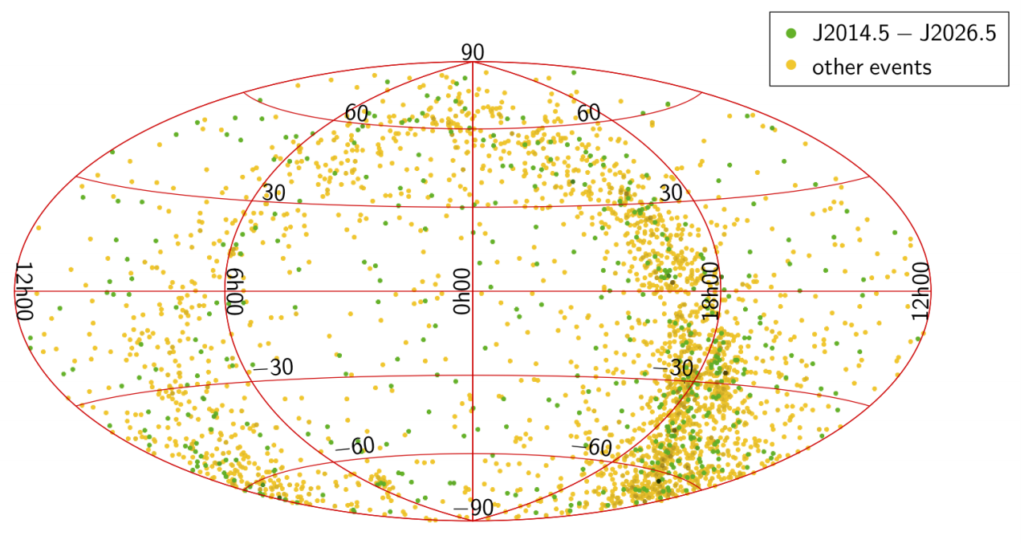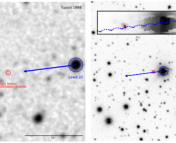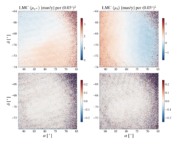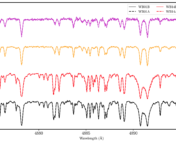Title: Prediction of Astrometric Microlensing Events from Gaia DR2 Proper Motions
Authors: J. Klüter, U. Bastian, M. Demleitner, and J. Wambsganss
First Author’s Institution: Zentrum für Astronomie der Universität Heidelberg, Astronomisches Rechen-Institut
Status: Accepted for publication in Astronomy & Astrophysics, open access on arXiv

Gravitational lensing is a peculiar thing. It involves a massive object, called a lens, bending light from a source for an observer to see as a ring or bright points arranged around the lens (see Figure 1). The degree and type of distortion is governed by the mass of the lens as well as the distances between the source, the lens, and the observer.
Gravitational lensing can occur on a variety of scales. Strong lensing produces the dramatic rings and multiple images, employing massive lenses (such as galaxies or galaxy clusters) to do so. Weak lensing is more subtle, also having massive lenses distort the images of source galaxies just slightly enough to make it seem as though they’re aligned with some field—like iron filings in the presence of a magnet. Microlensing involves much smaller lenses, such as stars with planets, and any distortions cannot be directly observed. Instead, microlensing results in the source appearing to brighten and dim with a sharp tell-tale peak in its light curve.
All forms of lensing are useful. Microlensing in particular can be used to detect exoplanets and measure the masses of the lens stars very precisely (see this Astrobite for an example of that). In this paper, the authors take advantage of the second data release from the Gaia satellite to predict instances of astrometric microlensing, or when the distortion from a lens causes the source to appear to shift position.
Lenses, Sources, Action!

The first instance of astrometric microlensing was observed very recently, by Sahu et al. in 2017. Instances of this phenomenon are more likely to be observed with nearby, fast-moving stars, that is, stars with high proper motion. The shift in the source position is governed by the factors previously mentioned, as well as the angular separation between the lens and the source (see Figure 2).
To predict astrometric microlensing events, the authors first identified stars with high proper motion and any background sources on their paths. They then determined the exact trajectories of the potential lenses and sources to calculate the extent of any microlensing event. After examining the Gaia data, the authors came up with a list of ~148,000 potential lens stars.

Each lens stars was combed for background sources by searching the box described in Figure 3. Lens stars were tracked from 2010 to 2065. The check for background stars cut the list down to ~68,000 candidate lens stars. To approximate the lensing effects, the authors divided their candidate lens stars into white dwarfs, main sequence stars, and red giants based on color and formulated standard masses or mass relations for each category.
Gaia’s Got This!

The authors ended up with 3914 predicted microlensing events from 2875 different lens stars between 2010 and 2065, which are shown in Figure 4. The shift in source position for these events is greater than 0.1 milliarcseconds. Most events lie in the Galactic plane or the Large Magellanic Cloud, with past events possibly being detectable in earlier Gaia data.
The authors pay particular attention to events occurring between 2014 and 2026, which is the current expected Gaia mission lifetime (se Figure 5). Barnard’s Star, which is the fastest moving star from our vantage point, has 37 predicted events over the total period studied, including 7 during Gaia’s lifetime. Of the lens stars, 352 are white dwarfs, meaning that better constraints on white dwarf masses may be obtained from these events.
The third Gaia data release is expected in the latter half of 2020, with the fourth coming in ~2022. These data will offer more five parameter solutions to background sources, allowing for more accurate predictions of microlensing events. In addition, multiple star systems may be considered as both sources and lenses, resulting in more revelations on the nature of these systems. Only time will tell!






Trackbacks/Pingbacks